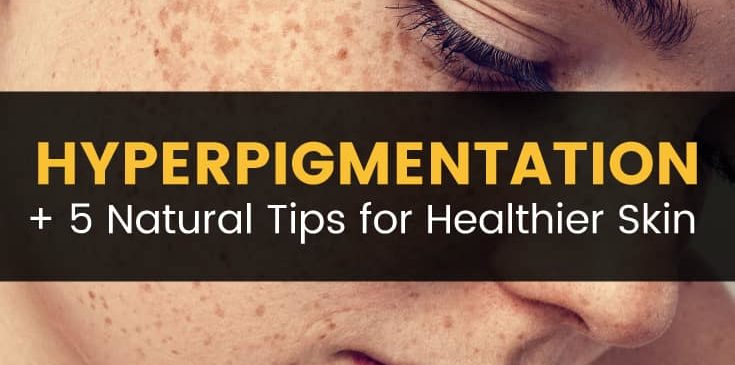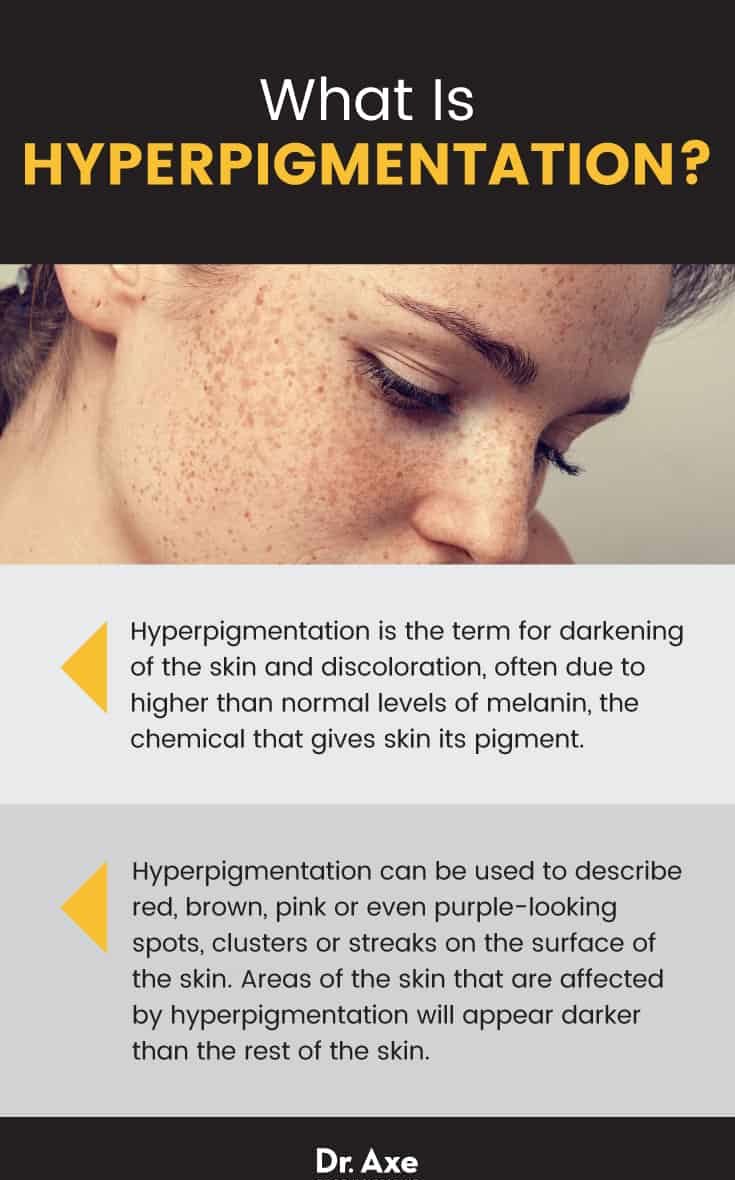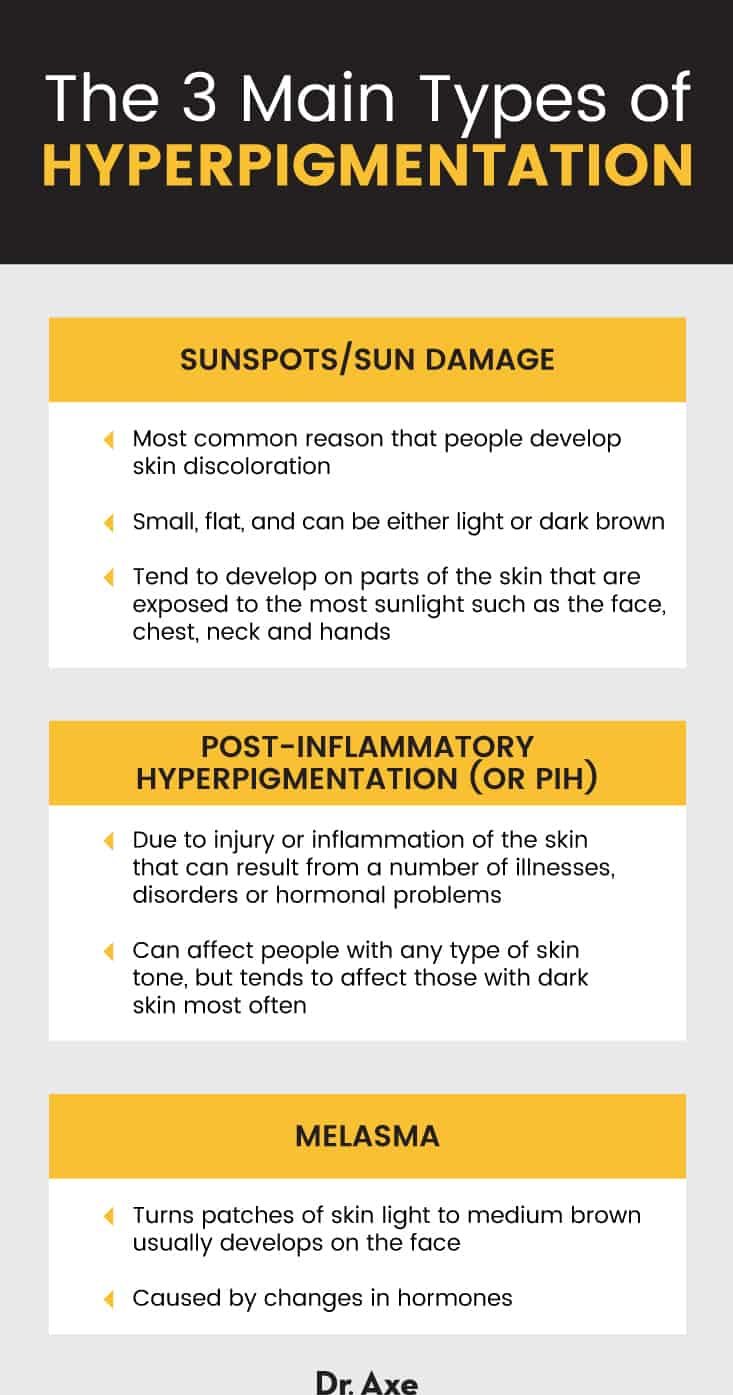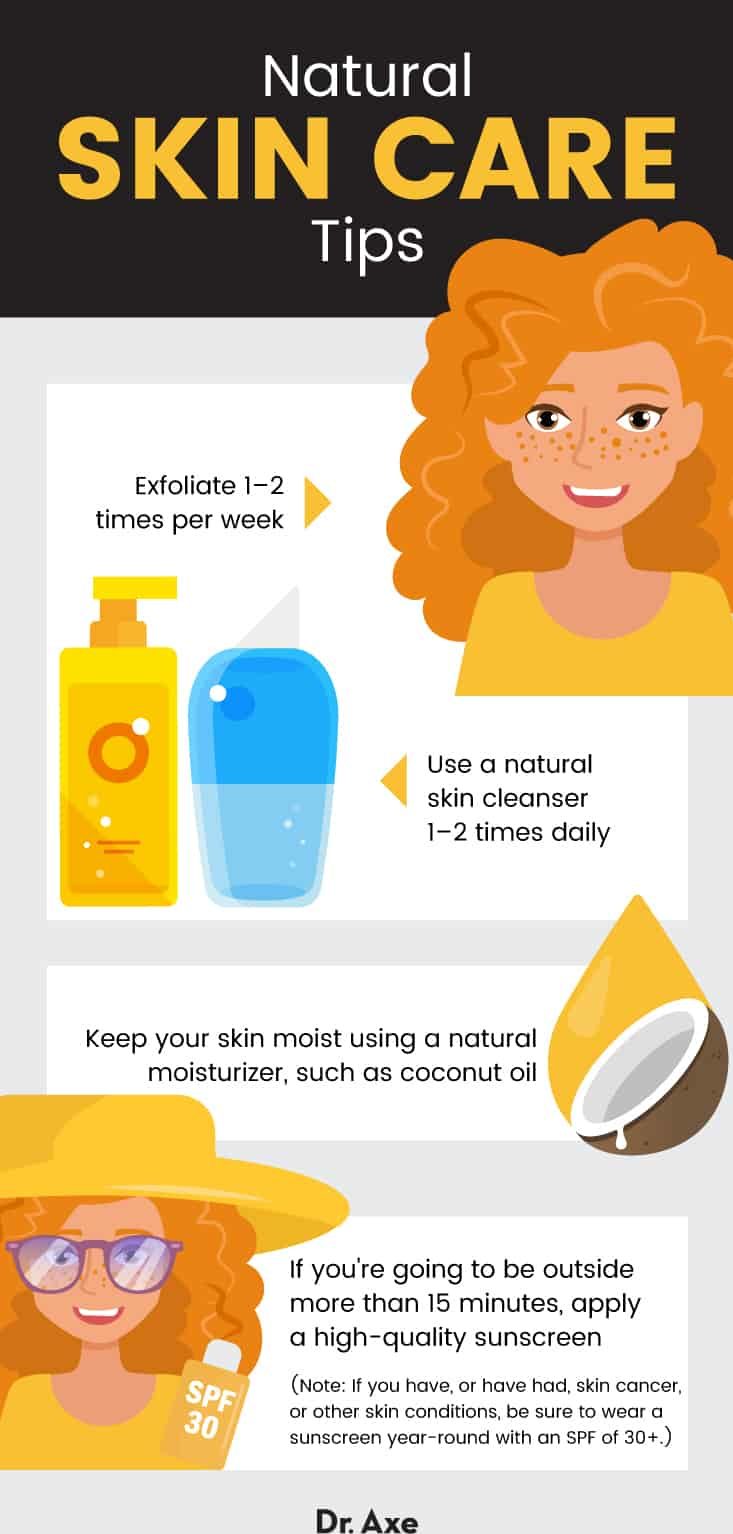This Dr. Axe content is medically reviewed or fact checked to ensure factually accurate information.
With strict editorial sourcing guidelines, we only link to academic research institutions, reputable media sites and, when research is available, medically peer-reviewed studies. Note that the numbers in parentheses (1, 2, etc.) are clickable links to these studies.
The information in our articles is NOT intended to replace a one-on-one relationship with a qualified health care professional and is not intended as medical advice.
This article is based on scientific evidence, written by experts and fact checked by our trained editorial staff. Note that the numbers in parentheses (1, 2, etc.) are clickable links to medically peer-reviewed studies.
Our team includes licensed nutritionists and dietitians, certified health education specialists, as well as certified strength and conditioning specialists, personal trainers and corrective exercise specialists. Our team aims to be not only thorough with its research, but also objective and unbiased.
The information in our articles is NOT intended to replace a one-on-one relationship with a qualified health care professional and is not intended as medical advice.
Improve Hyperpigmentation: 5 Natural Skin Care Tips to Help
December 12, 2017

Your skin is a very complex organ and its appearance has the power to express a lot about your overall health. In fact, your skin is the biggest and heaviest organ of your entire body. It provides protection and structure for your veins, tissue, other organs and bones.
It’s not only those of us who are “lucky” and have good genes who wind up having smooth, youthful looking skin into older age. Lifestyle and dietary habits also have a huge impact on your skin’s health and appearance. Factors like developing a lot of sunburns or spending too much time directly in the sun; eating lots of processed foods; hormonal imbalances; obesity; and smoking can all accelerate signs of skin aging significantly.
Even though wrinkles, fine lines and a certain amount of skin hyperpigmentation or discoloration may be a normal part of getting older, there are still many things you can do to help protect and improve your skin. A considerable amount of hyperpigmentation — or blotchy, spotted, dotted, dried and blemished skin — can be prevented by eating a healthy diet; using protection against too much skin exposure; and using natural skin care products.
What Is Hyperpigmentation?
Hyperpigmentation is darkening and discoloration of the skin, often due to higher than normal levels of melanin, the chemical that gives skin its pigmentation. It’s one of the most common skin problems affecting both men and women, and usually it only worsens with age. (1)
Hyperpigmentation can be used to describe red, brown, pink or even purple-looking spots, clusters or streaks on the surface of the skin. Areas of the skin affected by hyperpigmentation will appear darker than the rest of the skin and may become even more noticeable after spending time in the sun (which further increases melanin) or following an acne breakout. (2) Increased melanin can occur in the epidermis layer of the skin, the deeper dermis layer, or both. Some discoloration will go away on its own with time, such as mild acne marks or some freckles. But other types might require more intensive hyperpigmentation treatments to fade.

Symptoms
There are several types of hyperpigmentation that develop for various reasons. These types tend to cause different symptoms, some of which are easier to treat than others.
The three main types of hyperpigmentation, along with their most common signs and symptoms, include: (3)
- Sunspots/sun damage — This is the most common reason that people develop skin discoloration, starting as early as in their teens or twenties. Sunspots, which are small and flat, and can be either light or dark brown, tend to develop on parts of the skin that are exposed to the most sunlight such as the face, chest, neck and hands. These develop due to increased production of melanin. Freckles are a type of sunspot that is very common among people with light-to-medium skin tones. They can appear as small dots that are light-to-dark brown or sometimes red and black. Freckles tend to get darker with sun exposure and occur most often on the face, chest, arms and upper back.
- Post-Inflammatory Hyperpigmentation (or PIH) — PIH can be thought of as many types of “skin trauma,” since it’s due to injury or inflammation of the skin that can result from a number of illnesses, disorders or hormonal problems. For example, PIH may be caused by acne, eczema, psoriasis or contact dermatitis. All of these can contribute to higher pigmentation and pink, red or dark brown spots developing, even a keloid. PIH can affect people with any type of skin tone, but tends to affect those with dark skin most often.
- Melasma — This is the type of skin discoloration that turns patches of skin light-to-medium brown. It usually develops on the face, including on the cheeks, sides of the face, upper part of the nose, forehead and above the lips. Melasma is caused by changes in hormones and tends to occur during pregnancy, when taking birth control pills, or during times of hormonal imbalance. It increases with sun exposure. Sometimes it clears up when hormones become more balanced, but it can always return at a later time.
Related: Is Dermaplaning Safe? Potential Benefits, Risks, Side Effects & More
Causes and Risk Factors
The most common hyperpigmentation causes include: (4)
- Too much unprotected sun exposure — UV radiation from the sun damages skin by weakening collagen fibers and altering DNA, such as by preventing stem cells from repairing skin. When UV light creates a high degree of free radicals that damages DNA, skin cancer can develop. Sun exposure will cause a release of melanin, which is produced to help protect the skin from too much UV light, and is also the reason that exposed skin turns darker. When the skin is overwhelmed by UV light and doesn’t have enough time to respond by making sufficient melanin, then you’re left with a red sunburn.
- Acne, which can leave behind brown, purple or red spots and/or scarring.
- Damage caused by skin conditions including eczema, psoriasis or dermatitis.
- Hormonal imbalances or changes, such as during pregnancy or menopause.
- Illnesses including autoimmune disorders, gastrointestinal diseases, metabolic disorders and vitamin deficiencies that increase inflammation, especially of the blood vessels within the skin.
- Smoking cigarettes or using tobacco/nicotine.
- Taking certain medications that cause increased photosensitivity, or from exposure to chemicals/toxins.
- A poor diet, high in inflammatory foods, sugar, refined grains, sodium and chemical additives.
- Skin damage caused by shaving, picking at blemishes, waxing, tattooing, burns, allergic reactions, cuts, etc.
- Older age.
- Genetics.

Conventional Treatments
You can choose to either treat hyperpigmentation on your own at home using over-the-counter (OTC) products or by visiting a dermatologist for more intensive treatments.
There are many different topical hyperpigmentation treatments and skin care products available made with a number of active chemical ingredients that help to lighten and brighten skin. Some of the ingredients found in creams, serums, peels and lotions that serve as hyperpigmentation treatments include:
- Hydroquinone (around 2 percent concentration), which can help to reduce existing dark spots and discoloration and possibly prevent them from developing in the future. Creams containing hydroquinone are also said to make skin softer and smoother (note that they should not be used by women who are pregnant). (5)
- Depigmentation peel, a product which is often used to treat melasma. (6)
- Salicylic or glycolic acid, which are used in chemical peels.
- Retinol, also called Retin-A, which is usually applied in extract or serum form and considered one of the dermatology’s “gold standard treatments.” (7)
Other hyperpigmentation treatments that can be performed by a dermatologist include:
- Microdermabrasion, which removes the uppermost superficial layer of skin and can also be used in conjunction with injections that help lighten dark spots.
- Chemical peels, using ingredients like salicylic acid, glycolic acid and TCA which help to remove dark pigments below the surface of the skin. These are popular types of hyperpigmentation acne treatments, but they can be strong and are not always a good choice for people with sensitive skin.
- Hyperpigmentation laser treatments, which target blood vessels underneath the skin to remove discoloration. These can include red or blue light laser treatment, intense pulsed light (IPL) treatments to decrease sun damage or fractional laser resurfacing to help resolve very serious discoloration. Milder laser treatments work just on the skin’s epidermis, while more intense treatments penetrate deeper to the dermis and other layers. Even though they can be very effective, the downside to these treatments is that they can also be expensive and cause reactions such as irritation, peeling and redness.
What types of hyperpigmentation treatments are available for black or very tan skin?
Even though all humans have the same number of melanocytes, which produce melanin and determine skin color, these melanocytes wind up producing different amounts of melanin. People with dark skin have some built-in natural protection against UV light damage because they have higher levels of melanin. However, the downside to this is that it takes more sun exposure for them to make enough vitamin D.
People with dark skin can still develop hyperpigmentation and deal with other skin concerns, so they should try to prevent skin damage in the same ways as people with lighter skin (through diet, wearing sunscreen, not smoking, etc.). The risk factors described above for hyperpigmentation apply to people of all skin tones, so limiting your risk, treating underlying health conditions, and preventing skin inflammation/damage is the first step.
When discoloration is severe, a dermatologist can determine if more intensive treatments or topical solutions can help to decrease hyperpigmentation on darker skin. Some suggestions might be trying topical alpha hydroxy acids, retinoids, and sun avoidance, plus using full-spectrum sunblock.
Related: What Is an Esthetician? Training, Benefits, Treatments & More
Natural Ways to Improve Hyperpigmentation
1. Limit Sun Exposure & Wear Sunscreen
Despite the messages that most health authorities send about the dangers of sunlight, sun exposure actually has benefits extending to the whole body, such as helping us to make vitamin D. However, too much sun exposure can turn against you, leading to increased free radical damage (or oxidative stress) that alters the structure of skin cells and can sometimes even lead to cancer.
If you have no history of skin cancer, and are not at a high risk for developing it for any reason, then I recommend spending about 15–20 minutes unprotected in the sun each day in order for your skin to make enough vitamin D. However, beyond this amount, too much ultraviolet light exposure can start to be a big problem.
Dermatologists recommend avoiding direct sunlight exposure during peak times of day when the sun is strongest, from about 10 a.m.-3 p.m. If you are going to be in the sun for more than about 15–20 minutes during this time period, then wear sunscreen to protect yourself from hyperpigmentation, wrinkles, and other serious conditions. Even if your skin is not yet discolored you should still take steps to protect it, since prevention is the best way to keep your skin healthy.
For those who already have signs of hyperpigmentation or who have had skin cancer, year-round sun protection is recommended using a broad-spectrum sunscreen with an SPF of 30 or higher. You might also want to wear large 100 percent UV protective sunglasses to protect your entire eye area, as well as a hat. You can use sunscreen during the day and then cleanse your skin and apply products to help reverse hyperpigmentation at night. This combination can help to maximize results and prevent future discoloration.
If you do wind up getting a sunburn, then take steps to minimize lasting damage by cooling the burnt area with ice or cold water; cleansing only with gentle soap; applying natural moisturizer (such as aloe vera or coconut oil); and avoiding picking at the skin, peeling or exposure to very hot temps or more sunlight until the skin heals.
2. Eat An Anti-Inflammatory Diet
An unhealthy diet and lifestyle can lead to photoaging, uneven pigmentation, less skin cell turnover, dryness and sagginess. This is why it’s important to address any underlying health conditions that are contributing to skin discoloration. A healthy diet may also help you lose weight if necessary (obesity is linked to skin discoloration) and help prevent acne breakouts. Including lots of cancer-fighting foods in your diet can also offer some protection against skin cancer. Some of the best foods for supporting skin health and reducing visible signs of aging include:
- Berries — Good source of antioxidants including vitamin C and E that protect skin.
- Leafy green veggies — Great source of vitamin C and phytonutrients that decrease free radical damage.
- Wild-caught salmon and other types of omega-3 rich fish — Contains astaxanthin carotenoids, which help to reduce oxidative damage and inflammation, while also supporting skin elasticity and moisture.
- Pomegranates, strawberries, blueberries and cherries — Contain antioxidants, vitamins, phytonutrients and ellagic acid, which help with wound healing and preventing free radical damage or discoloration.
- Tomatoes — A great source of lycopene, which have natural protective effects against sunburns and reduce free radical damage.
- Yellow and orange veggies like carrots, sweet potatoes and butternut squash.
- Egg yolks — Can help form biotin, which supports skin’s cellular structure.
- Green tea — Contains polyphenols, which have free radical-scavenging abilities. Green tea can also be applied topically to the skin to reduce inflammation.
- Healthy fats including coconut oil, olive oil, avocados, almonds, flax seeds, walnuts and other nuts/seeds — Help to keep skin hydrated, prevent dryness and reduce inflammation.
As mentioned above, some of the other main reasons that skin begins to appear aged are due to causes like: sun exposure, oxidative stress, repetitive movements of the face, and thinning of collagen and elastin of the dermis. In addition to a healthy diet, I recommend consuming collagen, which has many anti-aging, skin-healing benefits — not to mention dozens of other uses for your joints, bones and digestive system. Collagen, the most abundant protein found in the human body that helps to form connective tissue including the skin, naturally declines with age.
Collagen and elastin are what give the dermis (the thickest layer of skin that forms most of its structure) strength and the ability to stretch. The dermis also contains many tiny blood vessels and lymph nodes, which is how healthy skin supports overall health by helping with circulation and the removal of waste or toxins. Consuming more collagen may help replenish skin’s moisture, elasticity and strength, and prevent roughness. (8) But collagen and elastin are vulnerable to damage caused by inflammation and oxidative stress, just like other parts of the body. One of the best ways to get more collagen into your diet is to consume bone broth or to use collagen protein powder.

3. Apply Natural Skin Care Ingredients
Start by taking care of your skin by cleansing your skin gently and removing any damaged cells by exfoliating. Use a natural skin cleanser once or twice daily (such as after exercising or before bed). Try to exfoliate about once or twice weekly, such as with a natural sugar scrub. Keep skin moist by applying a natural moisturizer, such as one made with lavender oil and coconut. You can apply skin cream or serum that contains one or more of the following ingredients to clean, dry skin:
- Licorice root (Glycyrrhiza glabra) — Licorice root comes from a plant that has long been used for its natural “skin lightening” effects. In extract form, which contains high amounts of compounds including glycyrrhizin, glabridin and liquiritin, it can be used to naturally lower melanin production in the skin and to block tyrosinase enzymes, which contribute to changes in skin pigment. It may also help reduce melasma, skin inflammation, eczema, irritation, loss of collagen, and improve the skin’s ability to absorb other ingredients. (9) Look for a cream that contains about 0.5 percent to 1 percent licorice extract (avoid if you have any known allergy to licorice).
- Retinoids (vitamin A) — Retin-A requires a prescription, but other types are available over the counter. (10) Retinoids are one of the most popular and effective treatments for reducing sun damage and dark spots; however, if you have sensitive skin you might not tolerate retinol well. Within skin care products it can be found in retinoic acid, retinol or retinyl propionate forms. It helps to reduce uneven pigmentation, strengthen elastin fibers and support structural collagen. Retinoids can also be used to reduce discoloration associated with acne, rosacea and dermatitis. Look for a serum with about 1 percent retinol and be sure to start slowly, since some people react negatively. You can also try making my DIY Rosehip Retinol Cream with Lavender.
- L-ascorbic acid (vitamin C) — This is a very popular ingredient in skin care for treating acne spots and scars. It helps to lighten hyperpigmentation by inhibiting the enzyme tyrosinase, combating free radical damage and boosting collagen production. (11) Look for a cream or serum with a 10 to 15 percent L-ascorbic acid concentration and apply at night before bed. You can also make your own homemade vitamin C facial serum, which is especially effective when made with other therapeutic ingredients for the skin, like frankincense oil and aloe vera.
- Niacinamide (a derivative of vitamin B3) — Niacinamide reduces the effects of melanin by inhibiting the transfer of melanosomes into the skin’s upper layer; helps to boost skin’s protective barrier and normalize skin pH; can improve skin texture; and all-around helps reduce signs of aging. (12) Niacinamide may decrease L-ascorbic acid/vitamin C’s effects, so use these two at least 30 minutes apart (such as one in the morning and one before bed). Look for a cream or serum with about 10 percent niacinamide concentration. This can be a good choice for people with sensitive skin who cannot tolerate retinoids.
- Essential oils — Tea tree essential oil has anti-inflammatory, antibacterial, antimicrobial and antifungal properties, which can help prevent acne breakouts or other types of skin irritation that leaves behind dark spots. Lemon essential oil is also very useful for decreasing acne breakouts; helping to fade scars and age spots; exfoliating skin; brightening and lightening skin; and normalizing skin tone and texture (just don’t wear it while in the sun since it increases photo-sensitivity). I recommend using essential oils with coconut oil on your skin considering it helps build protection against sunburns and also has natural antibacterial, antiviral, antifungal and antioxidant properties, which can reduce skin damage.
- Other skin care ingredients to look for that have similar effects and may help lighten dark spots include:
- soy (derived from soybeans)
- ellagic acid
- alpha-hydroxy
- arbutin
- kojic acid
- ubiquitone or coenzyme Q10
- ferulic acid
4. Exercise Regularly
Exercise, especially when it causes us to sweat, is important for detoxification, circulation and supporting the immune system. Exercising has many body-cleansing, anti-aging effects that support skin health because it increases blood flow and helps release waste. Aim to get at least 30–60 minutes of exercise most days of the week. Just be sure to stay hydrated during and after exercise to prevent dehydration and dry skin.
5. Supplements
Nutrient deficiencies may contribute to inflammation and poor skin health, potentially accelerating signs of aging. Supplements that may help improve skin health and appearance include:
- Antioxidants, including vitamin A, vitamin C and vitamin E
- Vitamins B3 and B5
- Omega-3 fatty acids
- Zinc
- Evening primrose oil
Risks and Side Effects
If you’re dealing with severe hyperpigmentation, or you have very sensitive skin and/or a history of any skin disorder including skin cancer, then it’s a good idea to visit a board-certified dermatologist before beginning to use over-the-counter treatments to lighten your skin. You might respond well to certain prescription treatments or other types of therapies, but experience little improvement or even adverse reactions when using OTC commercial skin care products.
To make sure you are not allergic to any skin care treatment or ingredient, first start by performing a skin patch test. Test any new products on a small patch of skin located on your arm or leg, rather than on your face or chest. If you have any negative reaction such as redness, peeling, swelling or a rash, then stop using the product right away.
Key Points
- Hyperpigmentation means a darkening of the skin and discoloration, usually due to higher than normal levels of melanin. The three main types of hyperpigmentation include: post-inflammatory hyperpigmentation (PIH), melasma, and sun damage.
- The most common causes of hyperpigmentation include: sun exposure; skin damage due to conditions like acne or eczema; inflammation due to a poor diet and unhealthy lifestyle; hormonal changes including pregnancy; smoking; and certain medical conditions or medications.
5 Natural Skin Care Tips to Help Hyperpigmentation
- Limit sun exposure and wear sunscreen.
- Eat a healthy diet.
- Treat underlying health issues to reduce inflammation.
- Exercise.
- Apply natural skin care products, including retinol and essential oils.



